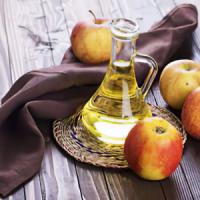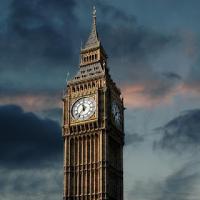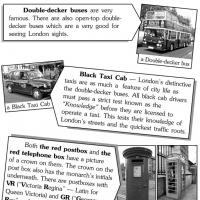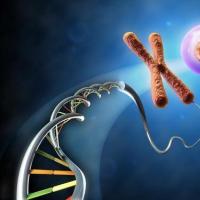Orthodox Church in Amsterdam on the map. The largest foreign complex of the Russian Orthodox Church appeared in Amsterdam on the site of a monastery of the Capuchin Order. Orthodoxy in the Netherlands
Reference . The Kingdom of the Netherlands is a country on the North Sea coast. Area - 41.5 thousand km 2, population - 16.4 million people. The official capital is Amsterdam, but the parliament and government are located in The Hague. Most believers are Catholics and Protestants. At the same time, more than 40% of the population declare that they do not belong to any religion.
It is possible to talk about the Orthodox presence in Holland before the beginning of the 20th century only as isolated episodes. Perhaps the most significant are the following. In 1763, the parish of St. Catherine in Amsterdam was founded. At the beginning of the 19th century, a church was opened in The Hague for the Russian princess Anna Pavlovna, who married King William II. After Anna Pavlovna's death in 1865, Orthodox parishes in the Netherlands gradually died out, mainly due to the small number of parishioners. And only the Bolshevik coup of 1917, which expelled millions of Orthodox Christians from Russia, marked the beginning of the creation of Dutch Orthodox communities. In 1922, Russian emigrants founded a parish in the name of St. Mary Magdalene in The Hague.
The beginning of “Dutch” Orthodoxy itself can be dated back to 1940, when hieromonk (and from 1966 until his death in 1976 - bishop) Dionysius (Lukin) accepted two Catholic monks into the Orthodox Church - Jacob Akkerdijk and Adrian Korporaal. Both Dutchmen later took holy orders and founded a Dutch-speaking parish and monastery in the name of St. John the Baptist in The Hague. Jacob ended his life in the rank of Archbishop of the Moscow Patriarchate, Adrian - in the rank of Archimandrite. Father Adrian did a great and painstaking job of translating liturgical books from Greek into Dutch. This translation is still used by those communities where services are conducted in Dutch.
Today there are more than 30 Orthodox parishes and three monasteries in Holland.
Maastricht: parish of nun Martha
 |
In principle, talking about Orthodox life in today's Maastricht can only be done with a certain degree of convention: the community, officially founded in 1976, is going through hard times. Liturgies, as a rule, are celebrated on Saturdays, and even then once a month. Clergy come from Deventer or Brussels (Belgium) to serve. At the services, at least on the days when I attended them, there were a little more than ten people. They usually serve in Dutch. Jurisdictionally, the parish belongs to the Exarchate of Parishes of the Russian Tradition of the Patriarchate of Constantinople (located on Rue Daru in Paris).
What is the reason for the apparent decline of the Maastricht parish - the only one in the entire southern Dutch province of Limburg? Of course, any judgment on this matter will be subjective and may turn out to be erroneous, although, as it seems to me, there is some truth in those who claim that the “stumbling block” is the very specific views and difficult character of the nun Martha (Smits), the actual headman parish and owner of the church building.
Yes, that's right - the owners. The church is located on the ground floor of a three-story building in Sint Maartenslaan. The house belongs to the nun Martha and Archbishop Gabriel (de Wilder), administrator of the Exarchate of parishes of the Russian tradition. A nice, tastefully furnished house, with many icons and books. I lived there for a little over a month: nun Martha provided me with a room (for a relatively small fee) while I was looking for suitable housing for the duration of my studies. Many times I talked with the nun on spiritual and secular topics. And I was quite surprised by the harshness of the judgments, the categorical conclusions, the lack of the calmness and warmth I expected (which, it seemed to me, should have increased in a person who had taken monastic vows). In addition, I was struck to the core by the nun’s hostility towards the Moscow Patriarchate and Russia, as well as strange attempts to justify the Dutch order, including ultra-liberal legislation. I don’t know what was more here: Dutch “patriotism” or a peculiar view on issues of politics, morality and morality, cultivated by individual representatives of the Exarchate of Russian parishes.
However, Maastricht is rather the exception than the rule in the life of Dutch Orthodoxy today. Traveling around the Netherlands, I came across examples of a completely different kind. I saw vibrant communities. I felt the openness and sincerity of the clergy, the kindness, hospitality and cordiality of the Orthodox laity.
Amsterdam: Bilingual Parish Mission
From Maastricht to Amsterdam it is only two and a half hours by fast train. The Dutch capital welcomes visitors with bustle and multilingual crowds. You have to be on your guard here: pickpockets are in full swing at the station and in its environs, emptying the wallets of unwary tourists. Professional beggars are more delicate, but very persistent: they willingly ask for alms in several European languages. True, most of them have not yet learned Russian.The Orthodox parish in the name of St. Nicholas the Wonderworker, on Leinbaansgracht in the center of Amsterdam (about half an hour's walk from the station), is one of the largest in Holland. A large three-story complex with a hotel, kitchen, utility rooms and, most importantly, a spacious church was purchased in 2006. Previously, there was a Catholic monastery there, closed due to the lack of monastics.
The appearance of the Moscow Patriarchate parish in Amsterdam dates back to 1974. Alexy Foogd, a teacher of Slavic studies at the University of Amsterdam, who converted to Orthodoxy in 1967, played a major role in its formation. In 1974, Alexy Foogd was ordained a deacon, and in 1978, a priest. From the very beginning, on the initiative of Father Alexy, the parish was conceived as Russian-Dutch, open to representatives of all cultures. At that time it was the only parish in the Netherlands where services were held in two languages - Dutch and Church Slavonic.
Since 1990, Father Alexy was assisted at the parish by priest Sergius Ovsyannikov, who became the new rector after the death of Father Alexy in 2002.
Reference . Archpriest Sergiy Ovsyannikov was born in 1952 in Leningrad. He studied at Leningrad State University, served in the army, and worked at the Department of Earth Physics of the Scientific Research Physics Institute. In 1980 he entered the Leningrad Theological Seminary. Six years later he graduated from the full course of the seminary and academy.
Father Sergius dreamed of becoming a teacher of theological disciplines.
 |
For some time, Sergiy Ovsyannikov was virtually unemployed, so he had to say goodbye to his teaching career. And in December 1987, Metropolitan Alexy of Leningrad and Novgorod (now His Holiness Patriarch) ordained him as a deacon, sending him to the village of Vyritsa. After two years of service in Vyritsa, Father Sergius received an invitation from the Anglicans for an internship at their college in London.
“A problem arose,” recalls Father Sergius. “The Soviet authorities let me go, but on the condition that I leave my passport and leave for good.” This didn't suit me. Fortunately, Metropolitan Filaret (Vakhromeev) helped - he was then the chairman of the Department for External Church Relations. Vladyka was able to settle some issues. I am extremely grateful to him, because otherwise my life would probably have turned out differently.
In 1989, Deacon Sergius left for “foggy Albion”. There, on English soil, he was destined to become a priest. The priestly consecration in September 1990 was performed by Metropolitan Anthony of Sourozh. The ordination was followed by a short service in the London Cathedral of the Dormition of the Mother of God and All Saints, after which Bishop Anthony, with the blessing of the Patriarch, sent Father Sergius to Amsterdam.
– I remember when I arrived here, I immediately thought: well, okay, I can spend two years here. But hardly more. What to do here? Father Alexy was then in fairly good physical condition. The parish is small; about fifteen people usually attended the services. I didn't see an active role for myself. And without Russian culture it was still hard for me. I was missing a lot. I missed the lively discussion of issues of faith, culture, and history. After all, I grew up in an environment where these discussions, lectures, and seminars played a significant role. This was life: discussions, searching for answers to some questions. The tradition of the Russian Orthodox Church is very rich, but we use it so little!
– But how did it happen that instead of the planned two years you live here for almost twenty?! – I asked.
“An external factor—the collapse of the USSR—played a big role,” answered Father Sergius. –The borders opened, many people rushed here. And so these people began to come to us one after another asking for help finding a job. The fact is that at that time a false directory was published, which indicated that workers were hired in Holland for seasonal work harvesting tulips. Victims of deception paid money, were transported here, and then abandoned. They spent the night for a day or two at the station and came to us... I remember an uncle came from the village and said: “Dad, I pray to Christ, help me find a job.” - "OK then. What is your specialty? - “I’m turning the wheel!” - “So everyone here is turning the wheel. What languages do you speak? - “In Russian and a little Ukrainian.” I explain to him that there is no chance of getting a job. And he responded: “Well, father, then write a certificate for your wife that I was here. She’ll hit me with a felt boot if I come back without any income...” I actually wrote him a certificate.
“Over the years, the word “father” has ceased to be abstract for me,” the priest emphasizes. “I realized that there are people for whom I am truly like a father.” The parish began to grow, and both Russian speakers and Dutch people came to us. I spent a lot of time with people, talked with them. I helped them, and they helped me. They helped me understand that a priest is a person who concelebrates and sympathizes... I remember one wonderful incident: at one o’clock in the morning a woman called me and shouted into the phone: “Father Sergius, I have a mouse in the kitchen, what should I do?” The first thought was, of course, to answer like this: “It’s half past midnight! Give me some rest after all. What right do you have? The answer to this question came immediately: that’s right - right, because you - father. Who else can she call? You don't have to go and catch this mouse. This woman just wanted to be heard, like many others.
Reference . Since 1990, the parish of St. Nicholas the Wonderworker has grown more than tenfold. Currently, 150–180 people attend Sunday liturgies. Among them are people of various nationalities: Russians, Dutch, Belarusians, Georgians, Ukrainians. In addition to the rector, the church is served by Hieromonk Seraphim (Standhardt), Archpriest Anthony du Pauw, and deacons John Suiter and Hildo Bos.
“It seems to me that the “leap” in the number of the parish occurred somewhere in 1995, when we first acquired ownership of the church,” said Father Sergius. – Of course, there was an influx of Russian speakers, but we do not divide the parish according to nationality. After all, everyone comes to Orthodoxy: the Dutch, the English, the French, the Germans...
The decision to purchase the very first building was not made easily. Although by the mid-1990s the parish had grown to 45 people, there were no millionaires among them. But there was faith and hope in God’s help. The community managed to acquire the former Protestant church on Kerkstraat. It was a typical Dutch church, tightly packed with houses, with two residential floors built on top.
“Of course, we had to conclude an agreement with the neighbors above,” noted Father Sergius. “The point was this: they don’t make noise on Saturday nights and Sunday mornings, and we hold fewer services during the week.” For some time the arrangement suited us, but then circumstances changed. In addition, after five or six years there was not enough space in the temple, although at first it seemed that it would be empty.
In 2006, the community acquired the already mentioned Catholic monastery on Leinbaansgracht (in the area called Jordan), paying one and a half million euros for it. The amount for the arrival is considerable.
“This is money collected bit by bit,” Father Sergius explained. – Plus a loan from a bank, which we will repay for about 25 years. Both our parishioners and friends of the parish donated money. One Russian woman donated 10 thousand, and one Englishman gave 20 thousand. This gave us hope.
The Amsterdam parish retains its bilingual character. On the first and third Sundays of the month, liturgies are served in Church Slavonic, on the second and fourth Sundays - in Dutch. On great holidays, the service is performed in both languages. The Slavic language helps emigrants from Eastern Europe feel the atmosphere of “their” church. Dutch makes Orthodoxy more open to locals, obscuring the idea of the Orthodox Church as “foreign.”
At one time, the community took an important missionary step: an Orthodox information center was opened in the center of the city, in the house of Father Alexy Foogd. First of all, for those who were interested in religion in general and Orthodoxy in particular. Those on duty at the center received visitors (and anyone could come in), answered both the simplest (for example: “Is it possible for Orthodox clergy to get married?”) and more sophisticated questions - about the veneration of icons, the veneration of the Mother of God and saints. If the interest in Orthodoxy among visitors to the center did not fade, then they were sent to the priests for deeper, more detailed conversations. These conversations could continue for many months and even years.
– We explained the essence of Orthodoxy. This was especially important for those who wanted to join the Orthodox Church, said Father Sergius. – We examined questions about the Ecumenical Councils, canons, Holy Scripture, sacraments, and so on. It’s good if you managed to sort out one point during the evening. And I spent two years preparing one person to accept Orthodoxy. And he didn’t accept it!
- But why?! – I couldn’t resist asking.
– The fact is that when I start these conversations, when a person has questions, I do not immediately say that I am preparing him to accept Orthodoxy. We don't force anyone. I usually emphasize: if you are interested, I will explain, and you will make a decision later, now we are not talking about a decision; if you want to know the beauty of Orthodoxy, then we will talk about it. And we talked. After two years, this man said: “Yes, I understand all this, but my relatives will not understand me. Now I have to explain to them." I don’t know what he did, but when he showed up eight years later, he said, “Now I’m ready.” He converted to Orthodoxy ten years later.
– Does an information center currently exist? – I asked.
- Yes. “Now he is at the temple,” answered Father Sergius. – Which has its pros and cons. The advantage is that a person who “accidentally” comes to the liturgy can look into this center and get some information. The good thing is that we were able to team up with a bookstore. Another plus is that after the liturgy I usually stay there until four hours. And very often one of my first questions to those who come is: “Have you read the Gospel?” If in response I hear reasoning that, well, I have a prayer book at home, then I send it to a bookstore and say: “If you don’t have money, take it for free, then we’ll figure it out. Read the Gospel first, and then we will talk.” Minus: the center is still on our territory, on the territory of the temple. So those who come have to make a certain effort to get here.
The information center is, of course, only one of the activities of the Amsterdam community (although, as I thought, it is extremely important from a missionary point of view). In addition, the parish has a Sunday school, a library, Bible and catechetical clubs. Quite ordinary and, in the opinion of the rector, very useful are trips to nature - on parish weekends. The parish also participates in social and charitable programs conducted jointly with representatives of other faiths.
“For example, once a week the church distributes food parcels for the poor,” says Father Sergius. – The distribution is organized by Protestant churches, and we provide premises and two or three volunteer assistants. Mercy must be cultivated; and you need to see these beggars who really need help.
But we are giving up something,” continues Father Sergius. - From what we cannot accept. For example, Catholics invited us to participate in a religious procession along the canals of Amsterdam. We answered “no,” explaining that during this procession the wafer, that is, the holy gifts, would be brought out, and, from our point of view, the holy gifts are not put on public display, we have a different vision on this matter. Of course, we are open to the city, open to other churches. We are ready to meet with them and discuss various problems. Without abandoning our fundamental positions on certain issues.
“As for the state’s attitude towards us, it is extremely neutral,” noted Father Sergius. – There is no pressure, but there is no help either... Relations with other Orthodox jurisdictions are quite normal. Yes, there were attempts to quarrel between us, but, fortunately, we were able to stop them. Holland is a small country, and if the Orthodox here quarrel, it will be like death. We understand that in some ways we disagree with Paris, but we do not doubt their Orthodoxy, we are talking about something else. Still, there must be a certain scale of values. And on this scale, unity in Christ comes first for us.
(To be continued.)
Temple address:
Lijnbaansgracht 47-48,
1015 GR Amsterdam
tel. +31-20-421-18-15
officeorthodox.nl
Divine services:
Saturday: All-night vigil at 17:30
Sundays: Liturgy at 10:00
1st and 3rd Sunday of the month in Slavic.
2nd and 4th - in Dutch.
Great holidays in both languages.
Clergy:
| Archpriest Sergiy Ovsyannikov - rector tel. +31 20 695 86 78 rectororthodox.nl |
|
 |
Hieromonk Seraphim (Standhardt) |
 |
frhildoorthodox.nl |
 |
priest Mikhail Bakker michaelbakkerorthodox.nl |
 |
Protodeacon John (John) Suiter Johnsewtergmail.com |
Editions: parish leaflet "Nicholas in Jordan" (e-mail)
Story:
Among the Amsterdam Christian communities, the Russian Orthodox Church occupies a special place. Already in the 17th century, the city sheltered the Greek-Russian Orthodox Church, the chapel of St. Catherine, located on Oude Zijds Voorburgwal. At that time, this small chapel was visited mainly by Russian and Greek sailors and traders.
Probably, the stay of the great embassy of Peter the Great in Amsterdam in 1697 was one of the most important moments in the life of this original Orthodox community.
In the 19th century, the marriage of King William II to the Russian princess Anna Pavlovna led to the spread of Orthodoxy in Holland. A Russian church was built at the king's residence, which until our century influenced other cities in the country. The Chapel of Anna Pavlovna in The Hague was a source of inspiration for many and provided an opportunity to get acquainted with the rich tradition of Orthodoxy of the Russian people.
Today's parish of the Church of St. Nicholas of Myra was founded in 1974 by a small group of Orthodox believers. They trusted in the heavenly intercession of St. Nicholas, the patron saint of Amsterdam, who is also one of the most beloved saints in the Orthodox world, especially in Russia.
In this church, people from other Orthodox countries also find the spiritual roots of their traditions. In addition, the Church of St. Nicholas in Amsterdam is a place where people of Western Europe can become acquainted with Orthodox Christianity. The open nature of the parish and the holding of services in Old Church Slavonic and Dutch contribute to the fact that the Dutch and people of other nationalities feel at home there.
Parish of the Church of St. Nicholas is growing. The old chapel on Utrechtsestraat, which had served for 15 years, became too small. A new building was needed. After a long search, in June 1995, the building of the Immanuel Church, located on Kerkstraat, was purchased. Finally, the Russian Orthodox Church in Amsterdam has found its place. In 2006, the parish moved to its current building - Tichelkerk.
Netherlands(Dutch. Nederland [ˈneːdərlɑnt], Dutch pronunciation) is a state consisting of the Western European part and the islands of Bonaire, St. Eustatius and Saba in the Caribbean Sea (also called the Caribbean Netherlands). In Western Europe, the territory is washed by the North Sea (the length of the coastline is 451 km) and borders on Germany (577 km) and Belgium (450 km). Together with the islands of Aruba, Curacao and Sint Maarten, which have a special status (self-governing state entity), the Netherlands is part of Kingdom of the Netherlands(Dutch: Koninkrijk der Nederlanden).
Largest cities
- Amsterdam
- Rotterdam
- Hague
Orthodoxy in the Netherlands
The Netherlands is not a traditionally Orthodox region of Europe, since after 1054 Christians remained under Catholic influence.
In the Netherlands there are over 30 parishes and monasteries of the Constantinople (including the Exarchate of the Russian tradition), Moscow (including the ROCOR), Serbian, Romanian and Bulgarian Patriarchates.
Story
According to legend, already in the 1st century a number of bishoprics were created in northern Europe, and the name of Saint Servatius (IV century) is mentioned in the history of Holland. But along with the departure of the Romans, Christianity also disappeared from those lands in the 5th century.
Only in the 7th century, under the Merovingians, Christianity again began to spread among the pagan Frisians, but until the educational activities of Saint Willibrord, the country remained almost pagan.
By the beginning of the 9th century, Holland was completely Christianized, and the See of Utrecht during the same period rose to the status of the leading one in the country.
After 1054 the Netherlands remained under Catholic influence
The first Orthodox parish of St. Catherine of Alexandria after many centuries was created between 1733 and 1736 by Greek merchants in a private building in Amsterdam. Served by Greek clergy. There were also Russians among the parishioners. Around 1760, parts of St. John Chrysostom's Orthodox liturgy were translated from Greek into Dutch for scholars visiting St. Catherine's Church in Amsterdam. The translation has not survived. Since 1852, Catherine's parish came under the jurisdiction of the Moscow Patriarchate.
At the beginning of the 19th century in The Hague, through the efforts of the future Queen of the Netherlands, Anna Pavlovna, a house church was created in honor of St. Mary Magdalene. At the beginning of the 20th century, the church was moved to another location, where it is still located.
In 1936, Hieromonk Dionysius (Lukin), whose name is associated with the creation of the Orthodox mission in the Netherlands, was transferred to The Hague.
In 1938, the first two Dutchmen entered the Russian Orthodox parish, and in 1940, through the labors of Father Dionysius, two Benedictine monks joined the Orthodox Church - Jacob Akkersdijk and Adrian Koporal.
In 1945, the Orthodox diaspora in the Netherlands became a victim of jurisdictional conflicts. Father Dionysius, remaining faithful to the Mother Church, together with Metropolitan Eulogius (Georgievsky) returned to the fold of the Russian Orthodox Church, but Jacob and Adrian transferred to the jurisdiction of the Russian Church Abroad, founding a Dutch-speaking parish in The Hague in honor of St. John the Baptist. Finally, a small group of believers remained under the jurisdiction of the Western European Russian Exarchate, subordinate to the Patriarch of Constantinople.
After the Second World War, many people who were forcibly transported to the West remained to live there, including in Holland. Representatives of the second wave of Russian emigration settled mainly in Rotterdam, where they soon formed an Orthodox community.
In 1947, Hieromonk Dionysius headed the stauropegial Orthodox mission, which was later transformed into a deanery.
In 1952, a small parish of monks Jacob and Adrian was visited by Archbishop John (Maksimovich), who, being an ardent advocate of the restoration of national Orthodox Churches in Europe, Bishop John approved of the activities of the Orthodox Dutch missionaries. In 1954, this community entered the diocese of Archbishop John, who at the same time ordained Father Jacob as a hieromonk and appointed him a priest in the parish of John the Baptist, which was converted into a convent. It was based on Benedictine nuns who converted to Orthodoxy. This monastery has set itself the task of witnessing to Orthodoxy among the local population.
With the transfer of John (Maximovich) to the USA, the Dutch parishes were actually left without archpastoral care, and therefore Archimandrite Jacob (Akkersdijk) was consecrated Bishop of The Hague and the Netherlands on September 19, 1965.
In 1966, the Synod of the Moscow Patriarchate decided to establish a see in Holland and appoint Father Dionysius as bishop there. On March 20, 1966, Archimandrite Dionysius was consecrated Bishop of Rotterdam, Vicar of the Belgian Diocese.
After the death of Archbishop John, Bishop Jacob and his flock lost the support and protection that the saint provided to the Dutch diocese. The Synod of the ROCOR was not interested in the development of national Churches and, thus, the Dutch diocese of the Russian Church Abroad actually found itself in isolation.
On August 18, 1972, the Synod of the Russian Orthodox Church decided to accept Bishop Jacob in his existing rank with the clergy and flock and establish the diocese of the Moscow Patriarchate in Holland with the appointment of the same bishop to the position of ruling bishop. The Rotterdam vicariate was abolished, Bishop Dionysius retired, but until his death in 1976 he remained rector of the parish in Rotterdam.
On June 20, 2004, the consecration of the Russian Orthodox Church in the name of the Holy Blessed Grand Duke Alexander Nevsky took place in Rotterdam. Previously, none of the parishes of the Moscow Patriarchate had a standard church building.
On November 6, 2013, at the Church of St. Nicholas in Amsterdam, the official presentation of a new translation of the Liturgy into Dutch, published in two formats - for clergy and for laity, took place.
Current state
Patriarchate of Constantinople
As of 2005, the Patriarchate of Constantinople had the largest number of parishes in Holland - 12. Six of them were part of the Belgian Metropolis, another 6 were part of the Western European Exarchate of Russian Churches. The Patriarch of Constantinople owned the only Flemish-speaking parish in Collumerpompe, as well as 2 monasteries.
Russian Orthodox Church
After the retirement of Archbishop Jacob, the See of The Hague continues to remain dowager. The temporary duties of the administrator of the Dutch diocese are performed by Bishop Simon (Ishunin) of Brussels and Belgium.
Currently, the Hague and Netherlands diocese has 7 parishes and 2 monasteries. There is also one parish of the Russian Church Abroad.
Serbian Orthodox Church
There are 6 parishes of the Serbian Orthodox Church in the country, which are part of the Western European Diocese. Serbian parishes began to appear in the Netherlands starting in the 1980s. Their parishioners were mainly emigrants from the Balkans.
Romanian Orthodox Church
There are 7 parishes of the Romanian Orthodox Church in the Netherlands.
Other Orthodox churches
There is also one parish of the Bulgarian Orthodox Church in the country.
The Saints
- St. St. Wilfrid of York
- St. St. Gregory of Utrecht
- St. St. Willibrord, "Apostle of the Netherlands"
Shrines
The relics of ancient Christian saints in the Netherlands are located in Catholic churches.
MAASTRICHT. Cathedral of St. Servat. Relics.
The Catholic monastery of the Order of Capuchin Friars Minor in Amsterdam has become... Orthodox. It was solemnly consecrated and opened to believers.
For almost a century, monks lived here wearing cassocks with pointed hoods. But by the beginning of the 21st century, the Order had become so impoverished that it could no longer maintain the monastery. The Orthodox parish in Amsterdam, on the contrary, has grown so much that it has begun to look for new premises.
As a result of a mutually beneficial deal, the largest foreign complex of the Russian Orthodox Church appeared in Europe. A Sunday school, a bookstore and a library have already been opened on the territory of the monastery. NTV correspondent Dmitry Khavin joined the ranks of the first parishioners.
Residents of the ancient Dutch quarter of Jordan in the center of Amsterdam are now getting used to the sounds of Orthodox chants. And such a religious procession has never been seen here.
The parish of the Russian Orthodox Church of St. Nicholas consecrates its new church today. The old one has become crowded, because, say, more than a thousand people gather for Easter. The opening of new Russian churches in Europe is now a sign of the times.
Simon, Archbishop of Brussels and Belgium: “With the collapse of the Soviet Union, a lot of former citizens of the USSR came to the West, and among them there were a lot of Orthodox Christians. And Orthodox people, when they come somewhere, want to have their own church, where services would be held in their native language, where they can confess, receive communion and communicate in Russian.”
The entire Tihelkerk monastery complex was purchased for the new temple. For almost a hundred years, monks of the Capuchin Order lived and prayed here. The altar and decoration of the temple are still temporary and the Catholic rite is sometimes visible from under them. Once upon a time, completely different music sounded here, and an organ remained in the choir from the Capuchin Fathers.
In the 70s of the last century, there were fewer and fewer Catholic parishioners. In the end, the parish simply fizzled out, and then the Capuchins decided to sell the monastery.
The last Catholic service was celebrated here two years ago. But the Capuchin brothers certainly wanted a religious center to remain here, which is why they agreed to sell the monastery to the Russian Orthodox Church for one and a half million euros.
For the center of Amsterdam this price is very small. The parishioners collected the money. And now, as they say, this is the largest property of the Moscow Patriarchate in Europe, because there are also cells and many office premises adjacent to the large church.
Father Sergius Ovsyannikov, rector of the church: “This is a truly grandiose monastery complex, and not just a church. There are many premises here where schools will be opened and where there is already a library of many thousands, occupying three large rooms.”
Naturally, most of the church parishioners are Russian. The Dutch come in second place, and therefore the service is conducted in two languages.
Father Sergius Standhart, priest: “Why are people now moving from Protestantism to Orthodoxy or, say, to other confessions? Because people are tired of believing only with their minds.”
Serbs, Ukrainians, Greeks, Romanians, and Eritreans come here to pray. And today here they presented the Order of Sergius of Radonezh of the third degree, granted by the Patriarch of Moscow and All Rus' Alexy II to the head of the parish, the Georgian Vazha Dzheniashvili.
I noted that fabulous Amsterdam offers entertainment for every taste: from the unbanal to the very piquant, and for connoisseurs of architecture and history there are numerous museums, historical sights and, of course, churches and cathedrals.
As we learned from the Internet, most churches in Amsterdam are Protestant and ancient, and this is due to the fact that during the Reformation, Protestantism gained the maximum number of supporters in the Kingdom of the Netherlands. By the way, in addition to the high number of Protestants in recent centuries, there are more than 40% of the total mass of agnostics (atheists), who influenced tolerance and freedom of morals (after all, they do not believe in the Lord and do not adhere to the commandments), and glorified the Kingdom as one of the most free-thinking countries due to their loyal attitude towards same-sex marriage, drug use, etc. Amsterdam has both a classic Catholic cathedral - a basilica, and an Orthodox parish. I will tell you in more detail about each of these architectural and historical monuments, and also provide up-to-date information about the possibility of free admission and ongoing events.
Church of St. Nicholas (Sint Nicolaaskerk)
The Secret Church in the Attic (Ons lieve heer op solder)
One of the most popular tourist attractions in my opinion is the Secret Church. It is located in the heart of the Red Light District and it seems to be one of the most unusual churches that I have seen in my life. It is called the Church of Our Beloved Lord in the Attic (address: Oudezijds Voorburgwal 38) and is also located in the middle of the Red Light District.

How did this church come about? Due to the persecution of Catholics during the Reformation in the 17th century, the Secret Church was literally hidden in a three-story residential building thanks to the efforts of a savvy merchant.

Now it is both a church and a museum. We were able to examine in detail the architecture of the building from the inside, the interior, as well as the life of the Dutch in the 16th century.

The museum has an audio guide (available in Russian, free of charge), and at the entrance they give out a pair of special slippers that will protect the rare floor from wear and tear by visitors’ feet. On Sunday there is a service and the church opens at 13.00, be careful! There is a separate entrance for parishioners. A visit to the museum-church will cost 10 EUR.
How to save money on visiting temples and cathedrals?
There are few profitable ways to visit churches with paid entrance, but they exist. Of course, I do not take into account personal acquaintance, because we take as a basis that you are a guest and a tourist in the city, like me. At the moment, I have opened and tested these two:

***
I remember how on that sunny September morning I desperately wanted to go to church and repent of all my sins! But I didn’t know where exactly to go, and you have a unique opportunity to take advantage of my review and experience and choose in advance both a tourist attraction and a place for confession. In a city of sailors and revelers, where an atmosphere of general fun reigns, it is very important to find, if the soul so requires, a clean, unspoiled place, and the church will be such a place.
 Pancakes with fillings - proven recipes
Pancakes with fillings - proven recipes Using Apple Cider Vinegar for High Temperatures
Using Apple Cider Vinegar for High Temperatures How to make apple jelly at home
How to make apple jelly at home Educational program for the United Kingdom of Great Britain and Northern Ireland: map and topic What is the capital of Great Britain in English
Educational program for the United Kingdom of Great Britain and Northern Ireland: map and topic What is the capital of Great Britain in English Short essay about Great Britain in English with translation
Short essay about Great Britain in English with translation General information about biology
General information about biology Oral irrigator: which one is better?
Oral irrigator: which one is better?